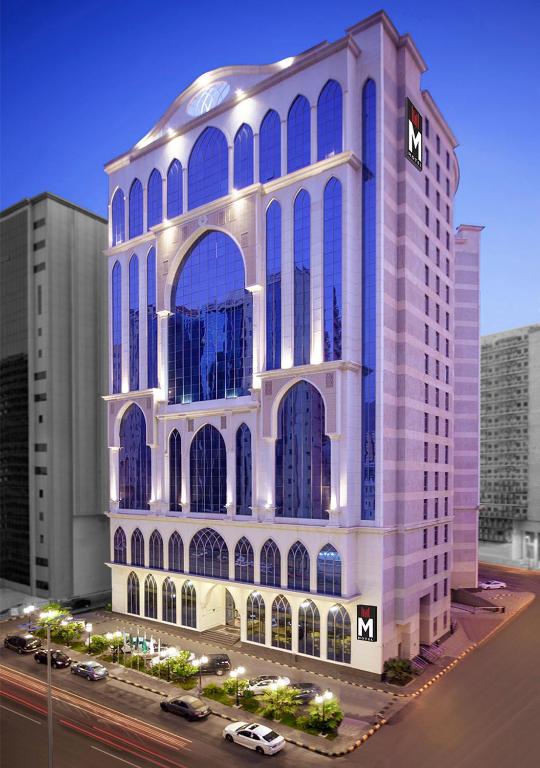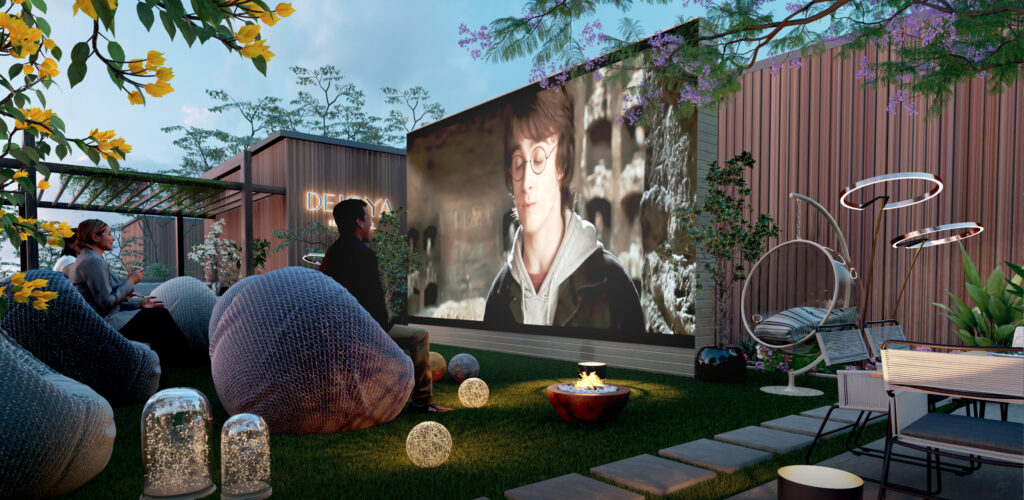Understanding Rental Types
When it comes to renting an apartment, several options are available, each with its own advantages and disadvantages. Here are the three most common rental types:
Defining Furnished Rentals
A furnished rental is a property that comes with basic furniture and appliances, such as a bed, sofa, table, chairs, and kitchen appliances. Sometimes, it may also include linens, towels, and kitchen utensils. Here are some key features of furnished rentals:
- They are ideal for renters moving in for a short period, such as students or professionals on short-term assignments.
- They command a higher rent rate than unfurnished rentals due to their added convenience.
- They come with a lower upfront cost as tenants do not need to purchase furniture.
Defining Unfurnished Rentals
An unfurnished rental is a property that does not come with any furniture or appliances. Tenants are in charge of providing their own furniture and household items. Here are some key features of unfurnished rentals:
- They are ideal for renters who plan to stay longer, such as families or individuals who have settled down.
- They command a lower rent rate than furnished rentals due to the added cost of furnishing the apartment.
- They allow tenants to personalize their living space according to their preferences.
Semi-Furnished Options
Semi-furnished rentals come with some basic furniture and appliances, but not everything. Here are some key features of semi-furnished rentals:
- They are ideal for renters seeking a balance between convenience and affordability.
- They command a rent rate lower than furnished rentals but higher than unfurnished rentals.
- They allow tenants to add their own furniture and household items to personalize their living space.
In conclusion, the type of rental that a tenant chooses depends on their specific needs and preferences. Furnished rentals are ideal for short-term stays, while unfurnished rentals are better suited for long-term stays. Semi-furnished options provide a balance between convenience and affordability.
Financial Considerations
Financial considerations play a crucial role When deciding between a furnished or unfurnished rental property. Here are some of the factors to consider:
Comparing Rental Prices
The rental price is one of the most significant financial considerations when choosing between a furnished or unfurnished rental property. Furnished rentals generally have higher rent than unfurnished rentals. However, tenants of furnished rentals do not have to bear the upfront cost of furnishing the property, which can be a significant expense.
Security Deposit Differences
Another financial consideration is the security deposit. Furnished rentals typically require a higher security deposit than unfurnished rentals. The landlord has more to lose if the tenant damages the furniture or other items included in the furnished rental.
Long-Term Financial Impacts
Choosing between a furnished or unfurnished rental property can also have long-term financial impacts. Furnished rentals can provide higher rental income and convenience for tenants but require more maintenance and replacement costs. On the other hand, unfurnished rentals typically have lower monthly rent, but tenants must bear the upfront costs of furnishing the rental property.
Here are some additional financial considerations to keep in mind:
- Furnished rentals can be more profitable in the short term, but unfurnished rentals may provide a higher return on investment in the long term.
- Taxes can also be a factor, as landlords can claim tax deductions for expenses related to furnishing a rental property.
- Profitability can vary depending on the local rental market. Researching the rental market and determining the demand for furnished vs. unfurnished rentals in your area is essential.
Financial considerations play a significant role in deciding between a furnished or unfurnished rental property. It’s crucial to carefully ascertain the benefits and drawbacks of each selection to make an informed decision that aligns with your investment goals and budget.
Benefits and Drawbacks
Advantages of Furnished Rentals
- Convenience: Furnished rentals offer convenience to tenants, as they don’t have to worry about purchasing or moving furniture.
- Higher Rent: Furnished rentals can command a higher rent rate compared to unfurnished rentals, which can increase the potential income for landlords.
- Attract Short-Term Renters: Furnished rentals are ideal for short-term renters, such as business travelers or students, who may not want to engage in purchasing furniture for a temporary stay.
Disadvantages of Furnished Rentals
- Upfront Costs: Furnishing a rental property can be expensive for landlords, as they have to purchase furniture and appliances upfront.
- Increased Turnover Rates: Furnished rentals tend to have higher turnover rates, as short-term renters may only stay for a few months before moving out.
- Risk of Damage: Furnished rentals are at a higher risk for damages, as tenants may not take care of the furniture as well as they would if it were their own.
Pros and Cons of Unfurnished Rentals
- Lower Monthly Rent: Unfurnished rentals typically command a lower rent rate than furnished rentals, which can attract long-term renters looking for more affordable housing.
- Flexibility: Unfurnished rentals allow tenants to personalize the space with furniture and decor.
- Limited Tenant Pool: Unfurnished rentals may attract a more restricted tenant pool, primarily consisting of long-term renters or families.
Overall, landlords should carefully weigh the benefits and drawbacks of furnished and unfurnished rentals before deciding. While furnished rentals offer convenience and higher potential income, they come with upfront costs and increased turnover rates. On the other hand, unfurnished rentals offer flexibility and lower monthly rent but may have a more limited tenant pool.
Rental Market Dynamics
The decision to offer a furnished or unfurnished rental property depends on various factors, including budget, investment goals, and the local rental market. Understanding rental market dynamics is crucial for making an informed decision.
Target Market Analysis
Knowing the target market is essential for determining whether furnished or unfurnished rentals will better cater to the local market and ensure full occupancy. Consider the following:
- Students: Students often prefer furnished rentals with basic furniture and appliances, as they may not have the resources or time to purchase and move furniture.
- Young Professionals: Young professionals may prefer unfurnished rentals, as they may already have furniture and prefer personalizing their living space.
- Families: Families may prefer unfurnished rentals, as they may have their own furniture and prefer to create a home-like environment for their children.
- Short-term Renters: Short-term renters may prefer furnished rentals, as they may not want to commit to purchasing furniture for a short stay.
Impact on Rental Turnover
Furnished rentals may attract a broader tenant pool and yield higher rents, but they also come with higher upfront costs and management requirements. On the other hand, unfurnished rentals may require less maintenance and insurance coverage, but they may yield lower rent rates and attract long-term tenants. Consider the following:
- Furnished Rentals: Furnished rentals may have higher turnover, as short-term tenants may move in and out frequently.
- Unfurnished Rentals: Unfurnished rentals may have lower rental turnover, as long-term tenants may stay for several years.
Influence of Location
Location is crucial in determining whether furnished or unfurnished rentals will better cater to the local market. Consider the following:
- Urban Areas: Furnished rentals may be more popular in urban areas, as they may attract short-term renters who are in the area for work or leisure.
- Suburban Areas: Unfurnished rentals may be more popular in suburban areas, as they may attract families and long-term tenants who are looking for a home-like environment.
In summary, rental market dynamics are complex and require careful consideration of the target market, turnover, and location. By understanding these factors, landlords can decide whether to offer a furnished or unfurnished rental property.
Practical Aspects
Maintenance and Upkeep
Regarding maintenance and upkeep, furnished rentals can be easier to maintain as the landlord is responsible for the upkeep of the furniture and appliances. However, this also means that the landlord will have to bear the cost of maintenance and repairs for the furniture and appliances. On the other hand, in an unfurnished rental, the tenant is responsible for the maintenance and upkeep of their furniture and appliances.
Wear and Tear Considerations
Wear and tear is important when deciding between a furnished and unfurnished rental. In a furnished rental, the furniture and appliances are more likely to experience normal wear and tear, which may lead to higher maintenance costs for the landlord. In an unfurnished rental, the tenant is responsible for their furniture and appliances, which means that the landlord will not have to bear the cost of any damage caused by the tenant’s furniture.
Furnishing Essentials
When furnishing a rental property, certain items are considered essential. These items include a bed, dresser, cupboards, sofa, and basic kitchen appliances. The landlord is responsible for providing these items in a furnished rental, which can be a significant upfront cost. In an unfurnished rental, the tenant is responsible for providing their furniture and appliances, which can be a significant cost for the tenant.
- Maintenance cost is higher for furnished rentals as the landlord is responsible for the upkeep of the furniture and appliances.
- Wear and tear is more likely to occur in furnished rentals, which can lead to higher maintenance costs for the landlord.
- Furnished rentals require the landlord to provide essential furniture and appliances, which can be a significant upfront cost.
Legal and Insurance Factors
Lease Agreement Specifications
When renting out furnished or unfurnished properties, there are certain legal and insurance factors that landlords need to consider. One of the most important aspects is the lease agreement. Here are some key points to keep in mind:
- The lease agreement should clearly state whether the property is furnished or unfurnished.
- If the property is furnished, the lease should specify which items are included in the rental and their condition.
- The lease should also outline the tenant’s responsibilities regarding maintaining and caring for the furniture and appliances.
- In case of any damages caused by the tenant, the lease should specify the terms for repairs or replacement of the items.
Insurance Policy Requirements
Another critical aspect to consider is insurance. Here are some things to keep in mind:
- Landlords renting out furnished properties may need additional insurance coverage to protect their furniture and appliances.
- It is crucial to check with the insurance provider about the specific requirements for insuring a furnished rental property.
- The tenant should also be required to purchase renters’ insurance to secure their belongings and cover any damages they may cause to the property.
- The lease agreement should clearly state the landlord’s and tenant’s insurance policy requirements.
Overall, landlords must ensure they have the right legal and insurance protections when renting out furnished or unfurnished properties. Landlords can minimize risks and protect their investments by clearly outlining the lease agreement specifications and insurance policy requirements.
Tenant Considerations
Deciding Between Furnished and Unfurnished
When deciding between furnished and unfurnished rentals, tenants should consider several factors. Here are some things to keep in mind:
- Budget: Furnished rentals typically come at a higher cost than unfurnished ones due to the added convenience of already having furniture and appliances.
- Length of Stay: Tenants who plan to stay in a rental for a short period may prefer a furnished rental to avoid the hassle of moving furniture and appliances.
- Lifestyle: Tenants who travel frequently or have a mobile lifestyle may prefer a furnished rental for the convenience of not moving furniture around.
- Personal Style: Tenants with a specific aesthetic or who prefer their furniture may prefer an unfurnished rental to have more control over the look and feel of their living space.
Personal Preference and Lifestyle
Ultimately, choosing to rent a furnished or unfurnished rental comes down to personal preference and lifestyle. Here are some additional considerations for tenants:
- Furnished rentals can be a good option for those who don’t want to invest in their furniture or don’t plan to stay in a rental for an extended period.
- Unfurnished rentals can give tenants more flexibility and control over their living space, allowing them to decorate and furnish it to their liking.
- Tenants who have pets may prefer an unfurnished rental to avoid potential damage to furniture and appliances.
- Tenants who prioritize sustainability may prefer an unfurnished rental to reduce waste and avoid purchasing new furniture.
Overall, tenants should weigh the pros and cons of each option and consider their individual needs and preferences before deciding between a furnished or unfurnished rental.
Landlord Perspectives
When deciding whether to offer a furnished or unfurnished rental property, landlords must consider various factors to make the best decision for their investment. Here are some key perspectives to keep in mind:
Attracting the Right Tenants
One of the primary benefits of offering a furnished rental property is attracting short-term tenants looking for a hassle-free living experience. By providing furniture and other essential household items, landlords can appeal to renters relocating, traveling for work, or simply looking for a temporary living situation. On the other hand, unfurnished rental properties may appeal to long-term tenants looking to make the space their own and bring in their furniture.
Property Management Strategies
Another important consideration for landlords is the level of management required for a furnished vs. unfurnished rental property. Furnished properties may require frequent maintenance and upkeep, as tenants may not be as careful with items they do not own. This could result in more frequent repairs or replacements, which can be costly and time-consuming for landlords. However, furnished properties may also be easier to manage in terms of turnover, as tenants are less likely to stay for long periods.
Here are some additional points to keep in mind:
- Furnished rental properties may require additional insurance coverage to protect the value of the furniture and other items.
- Unfurnished rental properties may be more appealing to tenants looking for a blank slate to decorate and make their own.
- Offering a mix of furnished and unfurnished properties may help landlords appeal to a wider range of tenants and maximize occupancy rates.
- Ultimately, the decision to offer a furnished or unfurnished rental property will depend on various factors, including the local rental market, the target tenant demographic, and the landlord’s personal preferences and investment goals.
Furnishing Details
What Constitutes a Furnished Rental
A furnished rental is a type of rental property that comes with basic furniture and household items that tenants need to live comfortably. The following items are typically included in a furnished rental:
- Bed: A bed with a mattress, pillows, and bedding is usually included in a furnished rental.
- Couch: A furnished rental usually provides a comfortable couch or sofa.
- Chairs: A furnished rental usually includes chairs for the dining room table and living room.
- Table and chairs: A furnished rental usually provides a dining room table and chairs.
- Coffee table: A coffee table is usually included in a furnished rental.
- Dishes: A furnished rental usually provides basic dishes, cups, and silverware.
- Pots and pans: Basic pots and pans are usually provided in a furnished rental.
- Décor: Some furnished rentals may include decorative items such as mirrors, lamps, and nightstands.
- Kitchen utensils: A furnished rental usually provides basic kitchen utensils such as spatulas, knives, and measuring cups.
Assessing Furnishing Quality
When assessing the quality of furnishings in a rental property, the following factors should be considered:
- Comfort: The furniture should be comfortable and in good condition.
- Quality: The furniture should be good quality and durable.
- Style: The furnishings should be appropriate for the property and appeal to potential tenants.
- Cleanliness: The furnishings should be clean and well-maintained.
- Functionality: The furnishings should be functional and meet the needs of tenants.
Landlords must invest in quality furnishings to attract and retain tenants. A well-furnished rental can command higher rent prices and attract higher-quality tenants.
Cost-Benefit Analysis
When deciding whether to invest in furnishings for a rental property, landlords should conduct a cost-benefit analysis to determine if the investment is financially worthwhile. This analysis should consider several factors, including the price difference between furnished and unfurnished rentals, storage costs, depreciation, and property size.
Evaluating Investment in Furnishings
Investing in furnishings for a rental property can be expensive, but it may also increase the rental income. Landlords should consider the following when making this investment:
- The cost of purchasing and maintaining the furnishings
- The potential increase in rental income
- The target audience for the rental property (e.g., short-term vs. long-term renters)
Calculating Depreciation and Storage Costs
When furnishings are purchased for a rental property, they depreciate as soon as they are used. Landlords should take this into account when calculating the cost-benefit analysis. Additionally, storage costs should be considered if the landlord chooses to store the furnishings when they are not in use.
- Landlords can use the Modified Accelerated Cost Recovery System (MACRS) to calculate the depreciation of the furnishings over time.
- Storage costs should be calculated based on the size of the furnishings and the amount of space needed to store them.
By conducting a thorough cost-benefit analysis, landlords can determine if investing in furnishings for a rental property is financially worthwhile.
Frequently Asked Questions
What are the cost implications of renting a furnished versus an unfurnished property?
- Renting a furnished property is generally more expensive than renting an unfurnished one.
- Furnished rentals usually require a higher security deposit to cover potential damage to the furniture.
- Tenants may also have to pay for utilities and other amenities included in an unfurnished rental.
What does renting a property ‘furnished’ typically include?
- Furnished rentals typically include basic furniture such as a bed, sofa, dining table, and chairs.
- Other items such as kitchen appliances, linens, and electronics may also be included.
- The specific items included in a furnished rental may vary depending on the landlord and the rental agreement.
How does the choice between furnished and unfurnished affect rental demand?
- Furnished rentals are generally more attractive to short-term renters such as students and business travelers.
- Unfurnished rentals appeal more to long-term renters such as families and professionals.
- The demand for furnished versus unfurnished rentals may also vary depending on the location and local rental market.
What are the benefits and drawbacks of renting out a furnished property as a landlord?
- Furnished rentals may command a higher rental price and attract short-term renters willing to pay a premium for convenience.
- However, furnished rentals require more maintenance and may be subject to more wear and tear from tenants.
- Landlords may also have to deal with the hassle of moving and storing furniture between tenants.
How do tenants’ circumstances influence the decision between furnished and unfurnished rentals?
- Tenants relocating for a short period or uncertain about their long-term plans may prefer a furnished rental.
- Tenants who already own furniture or plan to stay in the rental for a longer period may prefer an unfurnished rental.
- Tenants with specific needs, such as accessibility requirements, may also require a furnished rental with specialized equipment.
What should be considered when deciding to rent a furnished or unfurnished apartment in a major city?
- In major cities, furnished rentals may be in higher demand due to the influx of short-term visitors and business travelers.
- However, furnished rentals may also come with a higher price tag due to the high cost of living in major cities.
- Landlords should also consider the competition and local rental market when deciding whether to rent out a furnished or unfurnished property.
Qatar MLS
For professionals in the real estate field, Qatar MLS is an essential tool, delivering a complete guide to navigating thriving brokerages, forming crucial connections with potential clients, and widening their proficient network. The platform displays a variety of opportunities. Immerse yourself in its array of services while you carve your path to success by affiliating with Qatar MLS.












